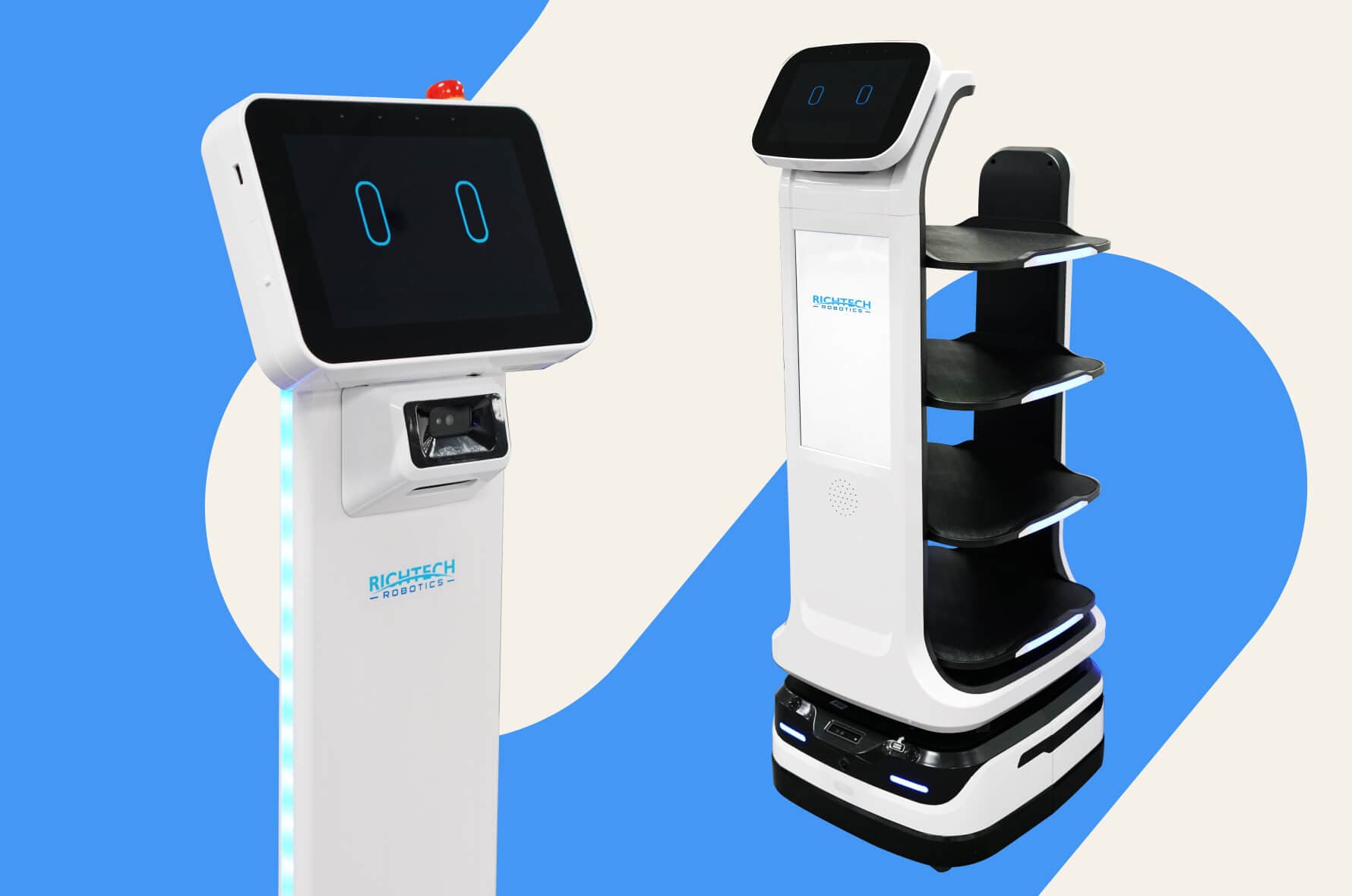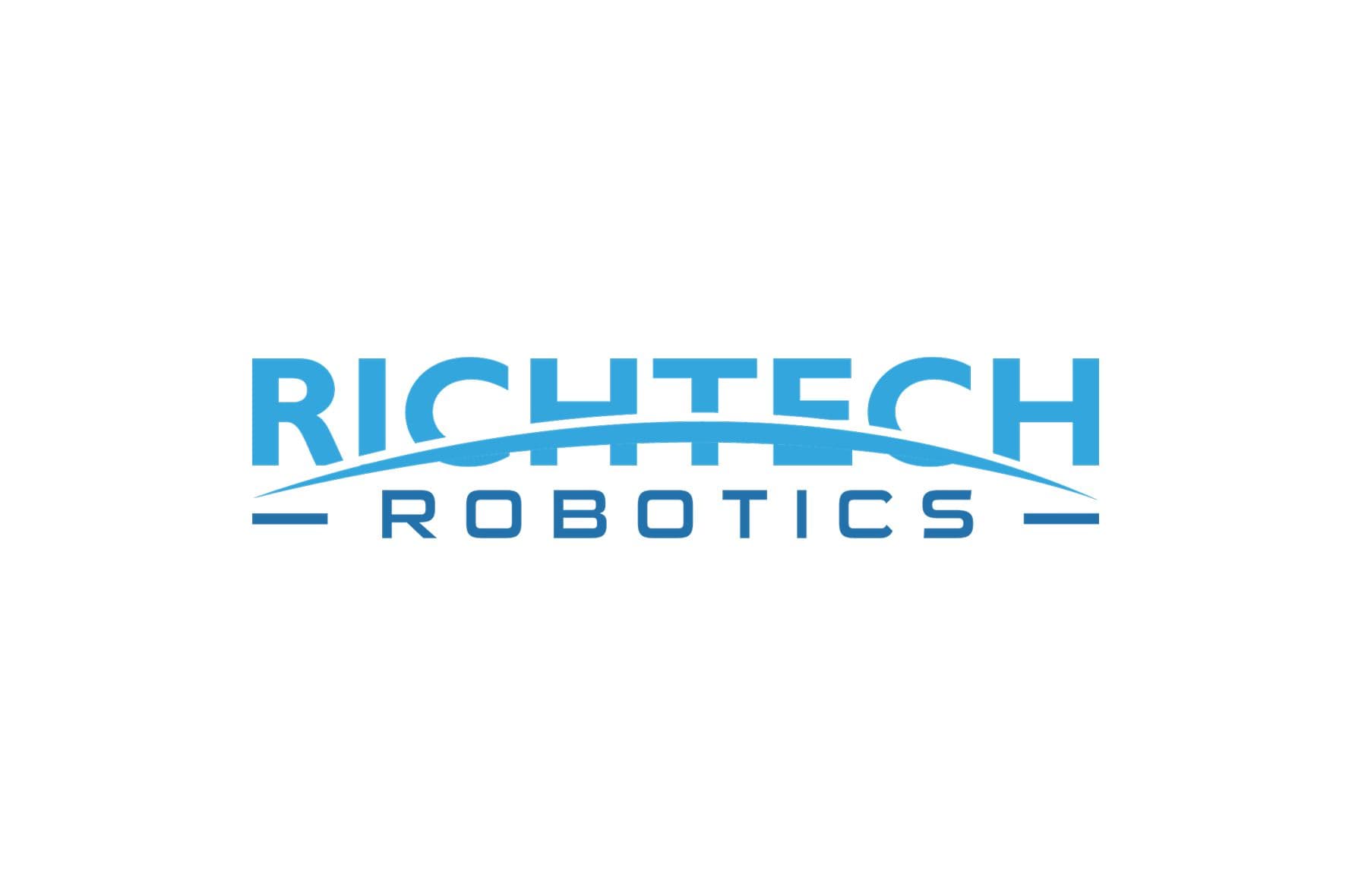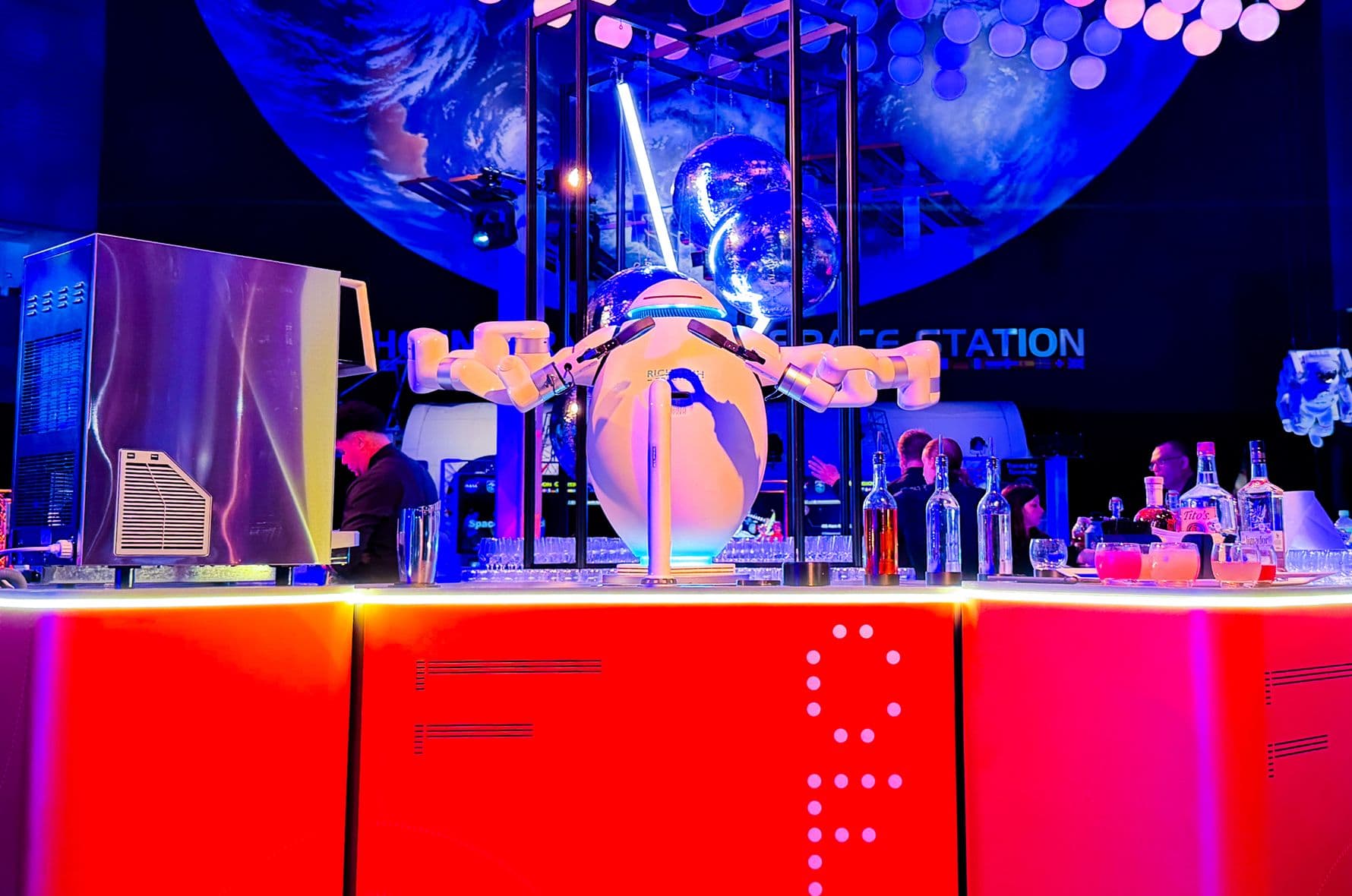Autonomous Mobile Robots (AMRs): The Busybodies of Your Workplace
By Timothy Tanksley
Key Takeaways:
- AMRs Enhance Workplace Efficiency: Autonomous mobile robots (AMRs) improve productivity, reduce labor costs, and enhance safety by automating tasks like inventory transportation and order picking. They free up human employees to focus on customer-facing tasks and more complex daily operations.
- Versatility and Customization: AMRs are highly independent compared to traditional automated guided vehicles (AGVs), mapping out their own pathways and minimizing the need for human intervention. They can be adapted to carry a variety of loads, including heavy or oddly-shaped packages.
- Advanced Navigation and Safety Features: Using technologies like LIDAR, cameras, and AI-driven mapping, AMRs can autonomously navigate and avoid obstacles, ensuring efficient and safe operation in rapidly-changing environments.
- Future Trends: The future of AMRs will involve advancements in AI, machine learning, and enhanced fleet coordination, driving further improvements in productivity, adaptability, and operational efficiency.
Key Takeaways:
- AMRs Enhance Workplace Efficiency: Autonomous mobile robots (AMRs) improve productivity, reduce labor costs, and enhance safety by automating tasks like inventory transportation and order picking. They free up human employees to focus on customer-facing tasks and more complex daily operations.
- Versatility and Customization: AMRs are highly independent compared to traditional automated guided vehicles (AGVs), mapping out their own pathways and minimizing the need for human intervention. They can be adapted to carry a variety of loads, including heavy or oddly-shaped packages.
- Advanced Navigation and Safety Features: Using technologies like LIDAR, cameras, and AI-driven mapping, AMRs can autonomously navigate and avoid obstacles, ensuring efficient and safe operation in rapidly-changing environments.
- Future Trends: The future of AMRs will involve advancements in AI, machine learning, and enhanced fleet coordination, driving further improvements in productivity, adaptability, and operational efficiency.
Close your eyes and imagine a smoothly-operating work floor. No chaos, no employees running around like chickens with their heads cut off. Perfect supply hand-offs between departments, and your human workers free to focus on your customers. With today’s advancements in robotics, your dreams no longer have to remain dreams, and a more efficient workplace is possible.
Autonomous mobile robots (AMRs) are a class of mobile robots designed to navigate and perform tasks within their environment without the need for direct human control. There are a variety of AMRs to choose from nowadays, and selecting the right one for your business can be an overwhelming process. This article will conveniently break down what autonomous robots are, their features and capabilities, and how they can optimize your workplace so your human employees can focus on what matters most: serving customers!
How Can AMRs Help Your Business?
Autonomous mobile robots (AMRs) significantly enhance productivity in warehouses by reducing the need for human intervention while increasing employee efficiency.They can be categorized based on their applications, such as Transport Inventory and Picking Assist AMRs. Each robot is tailored to improve efficiency in a variety of sectors, such as manufacturing, logistics, and healthcare.
Reduced labor costs, improved workflow efficiency, and better safety overall are just a few of the benefits from implementing AMRs into your workplace. Future advancements in artificial intelligence technology will advance machine learning significantly, making your robots highly adaptable in any workplace setting.
How Do Autonomous Robots Work?
Mobile robots operate as autonomous vehicles, using advanced sensors and depth cameras to select the most efficient route in various and often unpredictable settings (ie industrial environments). These sensors allow them to move around unexpected obstacles without needing to be overseen directly.

Safety sensors on Titan robot
This sets them apart from other robots, such as traditional automated guided vehicles (AGVs). AGVs, which follow fixed paths, cannot adapt to sudden changes in their environment, significantly bogging down the efficiency of your business’s daily operations and creating potential safety hazards. Conversely, the ability of AMRs to map their own pathways reduces the need for human intervention to avoid collisions or logistical hiccups.
Autonomous mobile robots are particularly valuable in modern warehouse automation, where the primary goal is to boost productivity and efficiency. Additionally, robots with weight-bearing platforms can carry heavy loads with minimal difficulty, which will help your business improve employee safety overall. Your human workers will thank you for the reduced strain on their backs and limbs!
Types of Autonomous Mobile Robots
Autonomous mobile robots are not a one-size-fits-all solution; they come in various types designed to address specific needs within different sectors. Broadly speaking, AMRs can be categorized into three primary types based on their applications: inventory transportation AMRs and picking assist AMRs.
The versatility of AMRs extends beyond these core categories, as mobile robots are also utilized in inspection, maintenance, surveillance, agriculture, etc. For now, let's take a look at two categories of AMRs revolutionizing warehouse and production operations: those designed for transporting inventory and products, and those designed for enhancing order picking efficiency.
Inventory and Product Transportation
Inventory transportation AMRs are engineered to handle various transportation tasks, significantly reducing the need for human manual labor.
Manual loading AMRs allow workers to load and unload inventory as needed, providing flexibility in handling different items. Rack and Cart Lifting AMRs, on the other hand, are designed to lift and transport heavy loads, making them ideal for use in warehouses and production facilities where high volumes of goods need to be moved efficiently.
Mobile robots such as Titan are specifically designed for inventory transportation from small boxes to large pallets. Titan can be customized with a variety of attachments for different transportation needs, and has multiple attachments built for packages of different sizes or even oddly-shaped loads, such as tires.
Order Picking Efficiency
In addition to transporting goods, AMRs play a crucial role in optimizing the order picking process. Picking assist AMRs are designed to bring products directly to human employees, minimizing travel time and significantly boosting productivity.
By streamlining the picking and packing processes, AMRs reduce the time taken to fulfill orders. In addition to improving operational efficiency, picking robots can reduce costs associated with manual labor and errors and significantly improve the customer experience.
Overall, order picking AMRs ensure products are picked and packed efficiently, leading to faster and more accurate order fulfillment—critical for customer satisfaction and operational efficiency.
Advanced Features of Modern AMRs
Modern autonomous robots are equipped with a suite of advanced features that enable them to perform tasks more efficiently and safely. Beyond the cool-looking form factor, the mobile robots of today utilize sophisticated sensors and software, such as sensor fusion.
Sensor fusion analyzes and interprets data from multiple sensors to provide a comprehensive understanding of the environment. This feature is crucial for navigating complex and rapidly-changing environments with relative ease and safety, all without conforming to predefined paths.
A standout feature of these robots is their ability to function without the need for extensive pre-programming. In fact, most of our AMRs are installed in less than a day.

Their high automation capacity, ability to seamlessly integrate with existing workflows, and strong adaptability to real-time changes allow them to address your business's varying production needs.
Two essential features built into these robots are autonomous mapping/navigation and collision avoidance.
Autonomous Mapping and Navigation
Autonomous navigation is a cornerstone of modern AMRs, enabling them to move through environments with precision and autonomy. They rely on an array of sensory technology, including LIDAR and cameras, to map out their surroundings. These advanced features allow mobile robots to gather environmental data and choose their own routes.
Simultaneous Localization and Mapping (SLAM) technology allows AMRs to create maps in real-time while navigating their environment. This capability is further enhanced by artificial intelligence algorithms, which enable the robots to adapt to changing environments dynamically.

Perception sensors are essential for building accurate maps, aiding in path planning, and helping the robot detect obstacles and avoid them. With SLAM software and perception sensors working in tandem, AMRs can navigate complex spaces efficiently and avoid awkward or dangerous bump-ins with humans or other machines.
Collision Avoidance and Safety Features
Safety is a top priority in the design of AMRs, and advanced obstacle detection systems play a crucial role in this aspect. These robots are equipped with multiple types of sensors, such as light detection and ranging (LiDAR) and stereo cameras to detect obstacles and avoid collisions in real time.

LiDAR technology utilizes laser scanners to measure distances between the robot and the object, while stereo cameras record images from a variety of angles. These laser scanners and visuals serve as the robot's "eyes," allowing it to reproduce an accurate map of its environment.
Predictive algorithms further enhance the safety features of AMRs by helping them anticipate potential collisions and adjust their pathing accordingly. This ensures that the robots can navigate through uncontrolled environments and avoid obstacles, thus increasing safety for your human workers.
Benefits of Implementing AMR Solutions
The implementation of autonomous robots in the workforce can revolutionize operations across a wide range of industries. One of the most significant advantages is the reduction in labor costs and operational errors, leading to improved financial performance and higher customer satisfaction.

AMRs also provide flexibility and scalability, adapting easily to protocol changes without causing major disruptions.
In distribution centers, AMRs automate the movement of goods, enhancing the speed and accuracy of order fulfillment. They promote workplace safety by taking over physically-demanding tasks and reducing the likelihood of worker injuries.
This new generation of robots can also withstand extreme conditions, such as sweltering hot or freezing cold work environments. This can improve worker satisfaction across the board, and increase employee retention in the long run.
Investing in AMR technology today allows your business to future-proof its operations, adapting to rapid technological advancements and maintaining competitiveness in an increasingly-automated world.
How AMRs Can Change Your Industry Operations
The industrial applications of AMRs are vast and varied, demonstrating their versatility and impact on operational productivity. One primary benefit of their application is automating the movement of goods in warehouses, ensuring the smooth handoff of a package from Point A to Point B.
AMRs can also be utilized in logistics to streamline inventory management and optimize the delivery process. By taking over these repetitive tasks, AMRs free up time for human workers to focus on more advanced tasks and better serve their customers.
Distribution Centers and Production Facilities
In distribution centers, AMRs play a critical role in optimizing material flow and improving order accuracy by automating transportation tasks. These robots increase the speed and efficiency of throughput, ensuring that packages and equipment are moved efficiently from one location to another.
Autonomous mobile robots (AMRs) significantly enhance real-time inventory tracking and order processing by automating key tasks like stock replenishment, retrieval, and order picking. Equipped with sensors and integration capabilities, they optimize picking routes, perform batch picking, and move goods autonomously, leading to faster order fulfillment and more efficient warehouse layouts.
By reducing reliance on manual labor, improving accuracy, and enabling data-driven insights, AMRs boost productivity, enhance safety, and support smoother, faster order processing. This can ease the burden on your human employees in industrial environments, particularly during peak production periods.
The integration of AMRs ultimately contributes to increased operational agility and responsiveness, allowing facilities to adapt quickly to changing production needs without being bogged down by small logistical hiccups. This synergy ensures that distribution operations run smoothly, with mobile robots handling the heavy lifting and repetitive tasks while human workers can focus on more complex operations and building relationships with customers.
Choosing the Right AMR for Your Needs
Selecting the right mobile robot for your operations requires a clear understanding of your business’s specific needs and goals.
One important consideration is modularity, or breaking down your business's complex work processes into smaller bite-sized pieces. Where can your robot be integrated into smaller, more everyday routines? Evaluating your operational requirements, such as load capacity, area of operation, and technological needs, is crucial to ensuring that your investment aligns with your strategy.
At Richtech, we work closely with our clients to design an integration plan tailored to your business’s workflow and unique needs. Let us tackle the fine details of your process, freeing up time for you to focus on the big picture and the future of your company.
The ideal robot for your business would allow the integration of multiple features, such as lifting units or advanced sensor technology.
Conducting Feasibility Studies
Feasibility studies help organizations evaluate the economic viability and potential return on investment before committing to a project. They are a critical part of the decision-making process when implementing AMR solutions–and can help your business save money in the long run.
Any thorough feasibility study should include an assessment of the total cost of ownership over the AMR’s lifespan to better understand the financial implications of purchasing a mobile robot.

Incorporating pilot tests can provide valuable insights into the performance and suitability of AMRs in real-world scenarios. This approach helps determine the potential impact and sustainability of AMR projects before the full-scale implementation of robots in your business operations.
Future Trends in Autonomous Mobile Robotics
The future of autonomous mobile robots is poised for exciting advancements. AMRs are expected to integrate more advanced AI and machine learning capabilities, fine-tuning their navigational intelligence and adaptability in rapidly-evolving environments.
With advancements in wireless networking, AMRs will benefit from enhanced coordination and communication capabilities within fleets. Technological innovations such as edge AI computing and LiDAR will significantly improve their real-time decision-making capabilities, aiding your business in making significant productivity gains over time.
What are Autonomous Mobile Robots (AMRs)?
Autonomous mobile robots (AMRs) are robots that can navigate and perform tasks in their surroundings without direct human intervention. Utilizing advanced sensors and software, they make real-time decisions to operate efficiently in dynamic environments.
How do AMRs differ from Automated Guided Vehicles (AGVs)?
Unlike AGVs, AMRs can autonomously map their own paths in physical space, offering greater flexibility for navigating complex and changing environments.
What are the benefits of implementing AMR solutions?
Implementing AMRs in your business can lead to substantial cost savings, increased efficiency in day-to-day operations, improved safety, and greater flexibility and scalability in operations. These benefits collectively contribute to a more effective and dynamic workplace.
How can businesses choose the right AMR for their needs?
Conducting feasibility studies and collaborating with certified system integrators will facilitate the selection and successful implementation of the most suitable AMR for your business.
What future trends can we expect in autonomous mobile robotics?
We can expect the robots of the future to encompass the integration of advanced AI and machine learning, real-time decision-making via edge AI computing, and enhanced fleet coordination through improved wireless networking. These advancements will significantly elevate the capabilities of AMRs.

